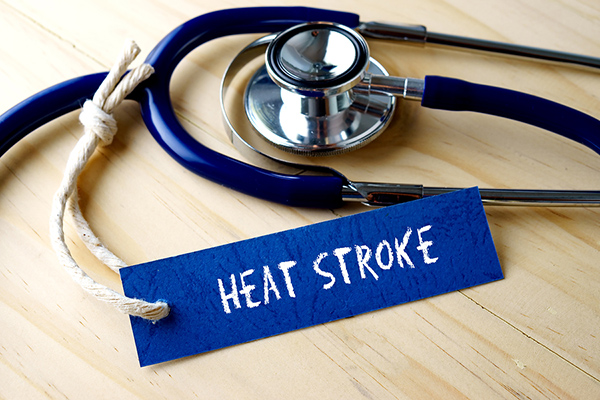Last Updated on May 25, 2025 by Muhammad Ramzan
Heat stroke is one of the most dangerous outcomes of prolonged exposure to high temperatures, and it can affect people of all ages without much warning. Whether caused by intense outdoor activity, lack of hydration, or extreme weather conditions, heat stroke requires immediate action to prevent long-term damage or even death. Understanding the signs and how to respond quickly can make the difference between a full recovery and a life-threatening situation. While summer often brings fun and outdoor adventures, it’s also a time when being prepared for heat-related emergencies becomes critically important for everyone.
Recognizing the signs before it’s too late
- Identifying Heat Stroke and Immediate Symptoms
Recognizing heat stroke in its early stages is crucial, especially since symptoms can escalate rapidly. It usually begins with signs like confusion, flushed skin, rapid heartbeat, and elevated body temperature. Unlike heat exhaustion, heat stroke may cause the person to stop sweating, a red flag that the body’s cooling system has failed. Some individuals may become dizzy or disoriented, while others might faint or become unresponsive. If any of these symptoms appear, immediate cooling is necessary. Moving the person to a shaded or air-conditioned area, loosening their clothing, and applying cool water to the skin can help lower body temperature. Fans or wet cloths can be used to speed up the cooling process. Time is critical, and every minute prevents brain damage or organ failure. Rapid recognition and intervention are the foundation of effective heat stroke response, making awareness an essential first step for everyone spending time outdoors.
- Providing Care While Waiting for Emergency Help
Once heat stroke is suspected, emergency services should be contacted immediately. While waiting for help to arrive, bystanders must focus on cooling the person down as efficiently as possible. Cold compresses under the arms, on the neck, and behind the knees can help regulate temperature. Placing ice packs in these areas is even more effective if they are available. It’s essential to avoid giving fluids if the person is unconscious or not fully alert, as this can lead to choking. Staying calm and maintaining close observation is necessary if the individual’s condition worsens. Heat stroke can lead to cardiac complications, and knowing how to perform CPR can be life-saving. Individuals who have obtained CPR certifications are more likely to respond effectively under pressure, applying compressions correctly while awaiting professional care. Being prepared doesn’t just mean recognizing the signs—it means knowing how to act precisely when someone’s life is on the line.
- Heat Stroke in Vulnerable Populations
Certain groups are more susceptible to heat stroke, including infants, older adults, people with chronic medical conditions, and those who work or exercise in hot environments. These individuals may have reduced ability to regulate body temperature or may not recognize the signs of heat-related illness early. For older adults, medications or reduced mobility may hinder the body’s natural cooling processes, while children may not know how to communicate their discomfort. Caregivers should remain vigilant during periods of extreme heat, encouraging hydration, rest, and regular checks for symptoms of overheating. When symptoms appear, their severity may be more pronounced, and recovery can take longer. Assisting quickly and confidently becomes even more critical. Understanding how to adjust clothing, manage cooling techniques, and avoid further exposure can significantly reduce the risk. The key is attentiveness—recognizing behavior, speech, or coordination changes can alert caregivers that something is wrong before the situation becomes severe.
- Preventative Measures and Environmental Awareness
Preventing heat stroke begins with planning and awareness. Checking the weather forecast, dressing appropriately, and scheduling outdoor activities during cooler parts of the day are simple but effective strategies. Hydration is the most important preventive step, especially for those engaged in physical activity or outside. It’s not enough to drink only when thirsty—regular fluid intake helps the body function properly in the heat. Creating shaded areas, using fans or misters, and limiting strenuous activity during peak temperatures can also reduce the risk. For those in urban environments, recognizing the dangers of heat-absorbing surfaces like asphalt or concrete is essential, as these areas can retain and radiate heat long after the sun has gone down. Individuals and communities can mitigate the dangers by understanding how the environment contributes to heat-related illness. Preventative action doesn’t require expensive equipment or significant lifestyle changes—just consistent attention to conditions and personal limits.
- Post-Emergency Recovery and Monitoring
Even after the immediate danger has passed, recovery from heat stroke doesn’t end when the person cools down. The body remains stressed and can take several days to return to normal, particularly in severe cases. Monitoring signs of fatigue, confusion, or continued temperature irregularities is critical in the hours and days following a heat-related emergency. Follow-up care may include electrolyte monitoring, hydration therapy, and resting in cool environments. It’s also an opportunity to reflect on what happened and evaluate how future risks can be reduced. Families and caregivers can take this time to review safety protocols, stock up on supplies, and consider first aid training. For those who experienced heat stroke firsthand, increased sensitivity to heat is standard, making future prevention even more critical. Long-term health outcomes improve when care continues beyond the crisis, focusing on maintaining hydration, managing medication side effects, and avoiding unnecessary heat exposure.
Heat stroke is a preventable emergency but requires vigilance and fast action when symptoms appear. Understanding the signs, knowing how to cool the body effectively, and being prepared to step in confidently are essential tools for anyone in hot weather. Every step matters in those critical minutes, from simple cooling techniques to life-saving CPR. Vulnerable individuals face increased risk, and caring for them means staying one step ahead of the heat. Preparation, awareness, and calm responses are the pillars of heat stroke first aid. With rising temperatures becoming more common, readiness for hot weather emergencies is no longer optional—it’s part of keeping ourselves and those around us safe.










